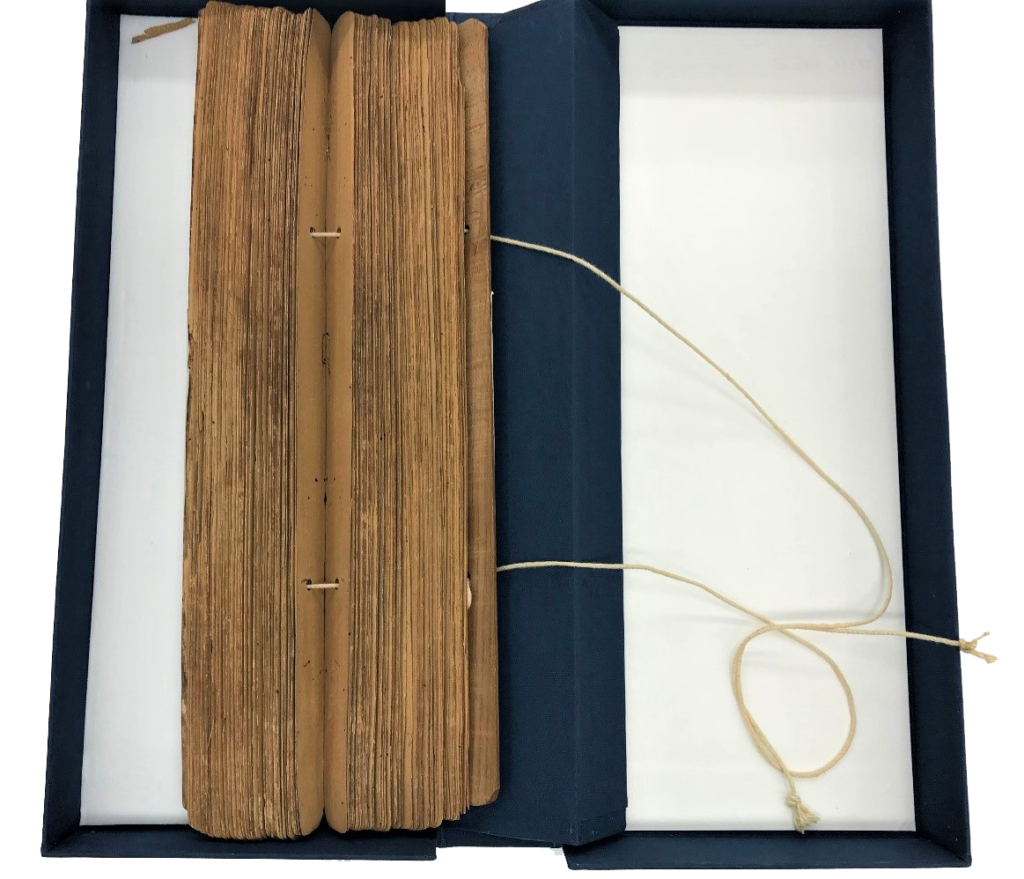Conservation
Collection Care and Preservation
Complex conservation work begins with a condition report to assess an item and develop an overall treatment plan. Photographs are taken of the item in its pre-treatment state. Each necessary phase of repair and long-term storage needs are proposed in this report.
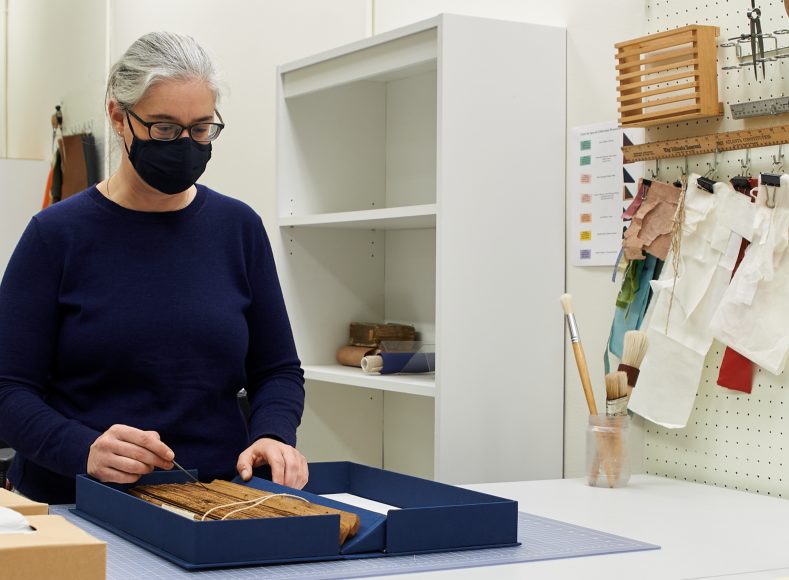
Condition Assessment
Structure and Fragility
Because Telugu manuscript’s palm leaf pages are quite fragile and easily damaged when handled, it required a storage solution that would offer protection but also allow access with the least amount of handling.
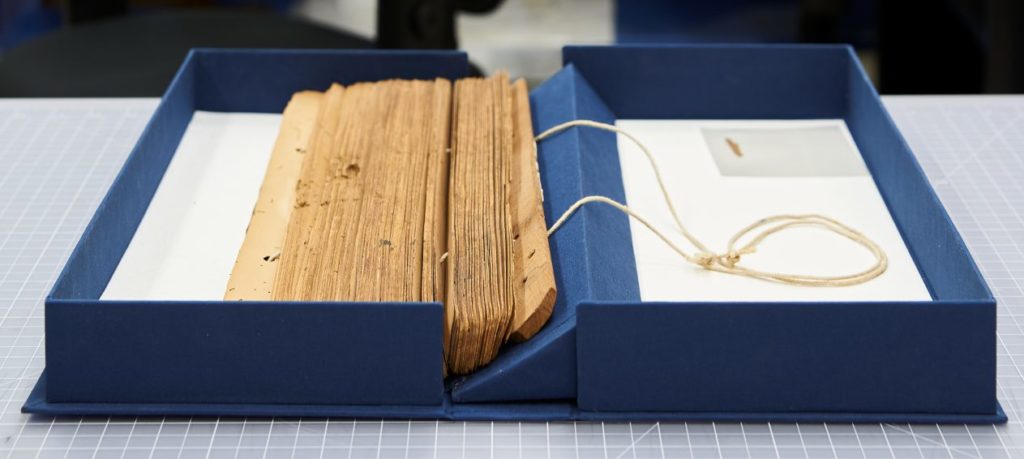

Protective Enclosure
To protect the fragile palm leaves, the Conservation staff created a custom-made, double tray box with a wedge that folds out (see photo below). This allows access with minimal handling and without removing the manuscript from the box. It also creates a micro-climate inside of the box, buffering the manuscript from changes in temperature and relative humidity while physically protecting it from potential damage due to dust, light, or pests.
Intervention and Documentation
A treatment report is written after the conservation work and item rehousing is completed. This report describes exactly the treatment performed, materials used, and photographs of the finished item. All intervention details are documented in the report, such as types of adhesives used, description of any added material like Japanese paper, and perhaps a description of added sewing fiber for strength.
For additional information, please visit the American Institute for Conservation wiki on Palm Leaf Manuscripts.

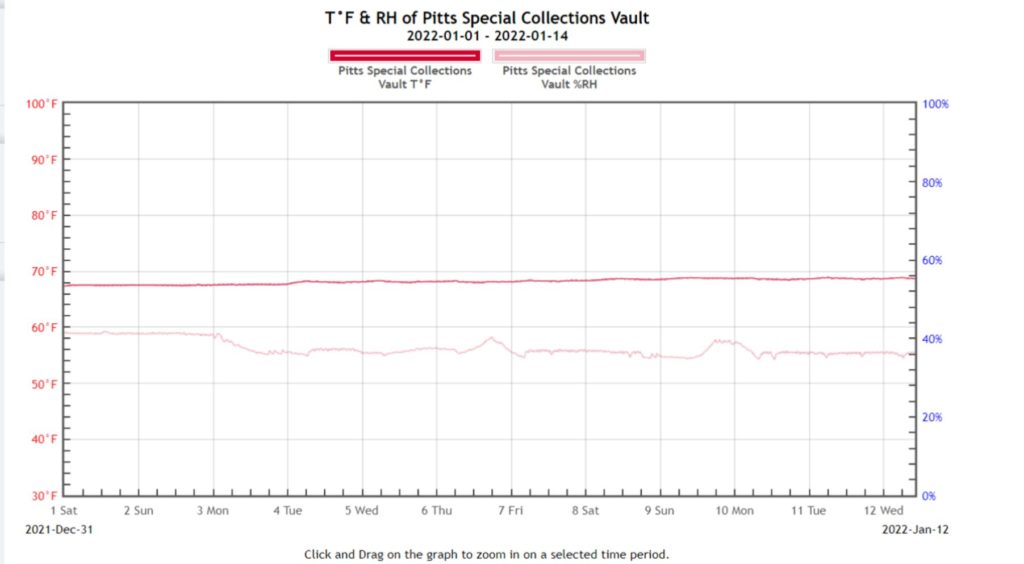
Environmental Conditions
Monitored Spaces
Storage considerations vary among our different library collections. Physical condition, fragility, and use must be considered when determining the access level to specific collection items. These factors help to define optimal environmental conditions for the best protective housings, temperature, relative humidity, and light.
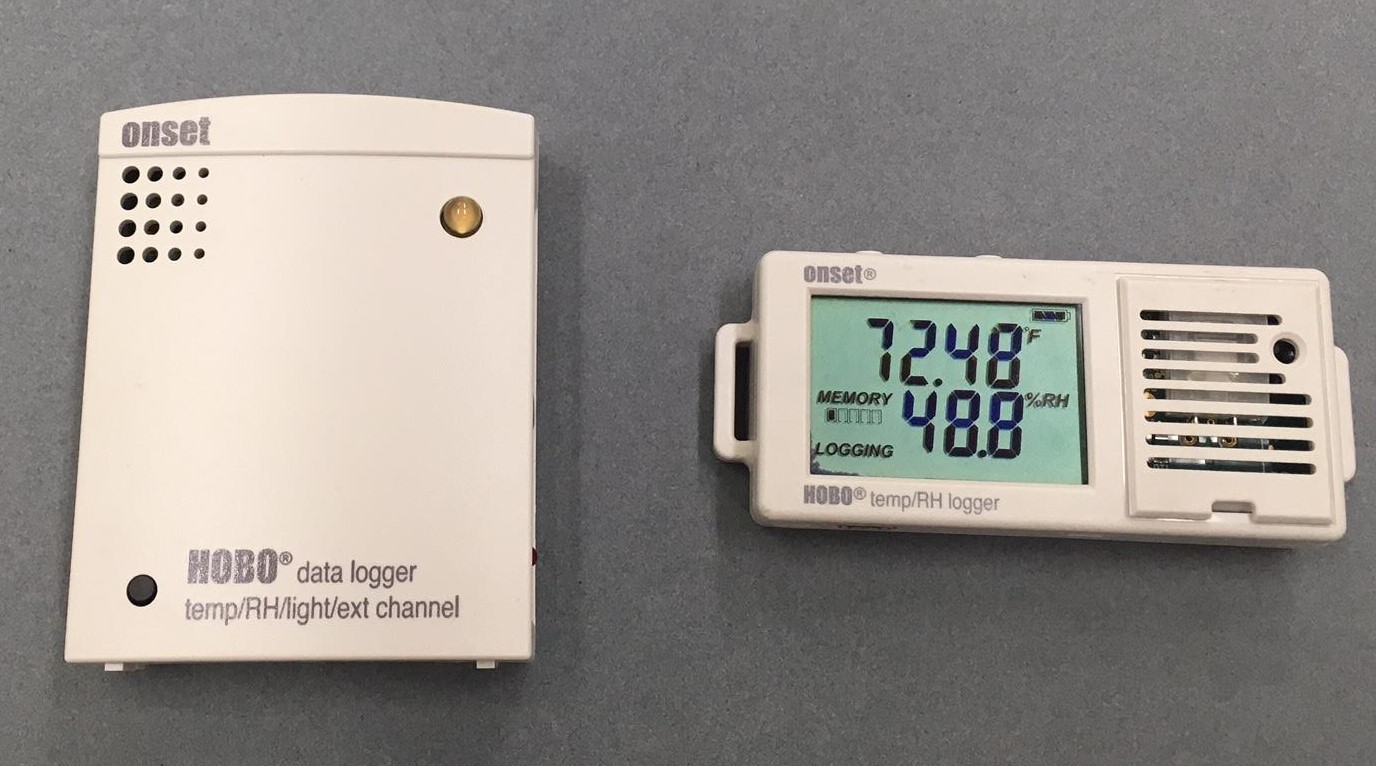
Environmental Data
Monitoring the environmental conditions of our collections is important to ensure their long-term preservation. We monitor temperature, relative humidity (RH), and visible and ultraviolet light levels. Temperature and RH levels must be kept within well-defined ranges to prevent mold growth, pests, and natural aging or decay of the materials. High levels of light may also cause collection items to fade, discolor, and age. The Conservation staff monitors these levels in all library collections and exhibition spaces. Data collected by these monitors is gathered, converted into informational graphs, and shared frequently with collection stakeholders who collaborate in the care of collection material.

